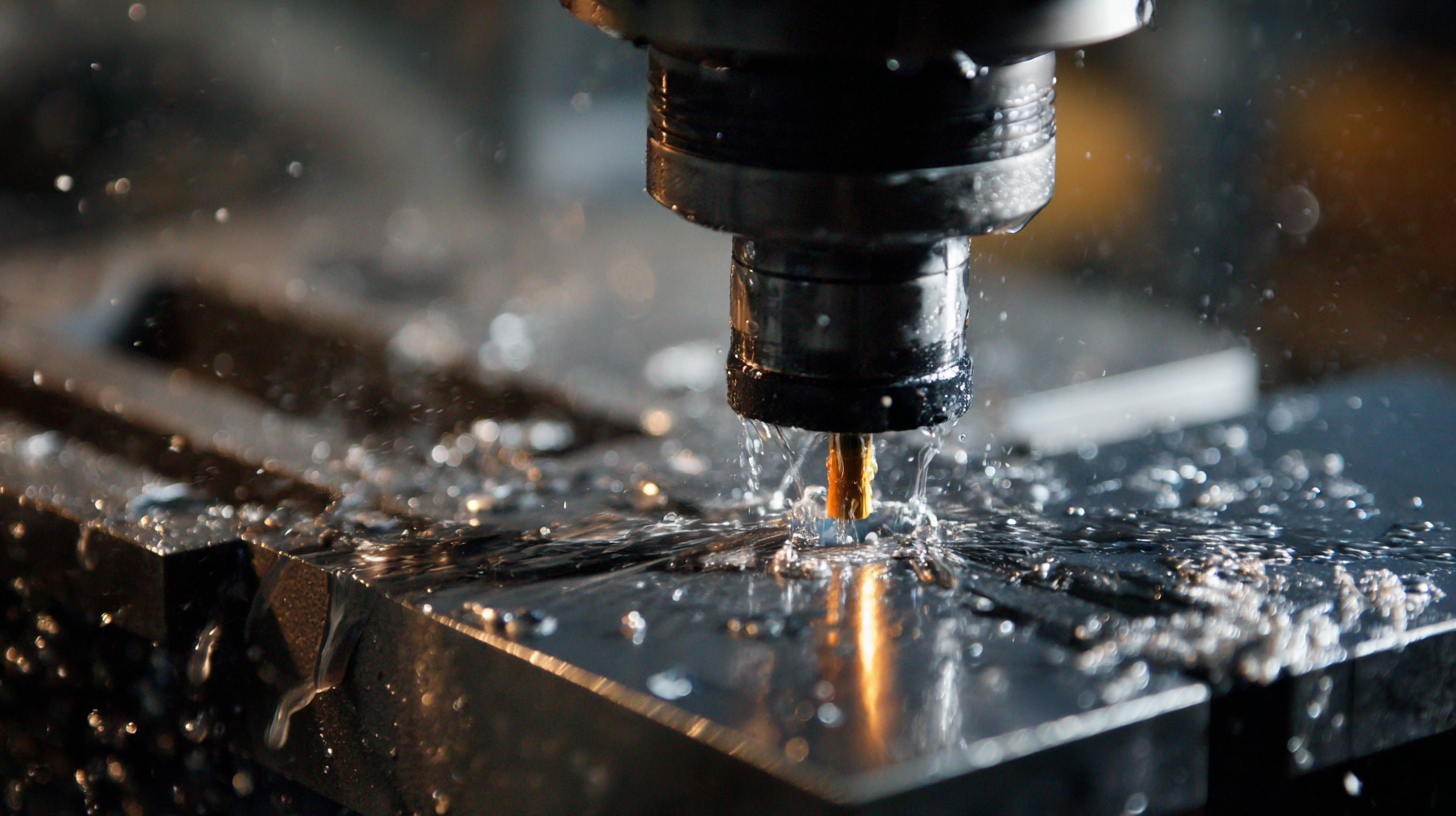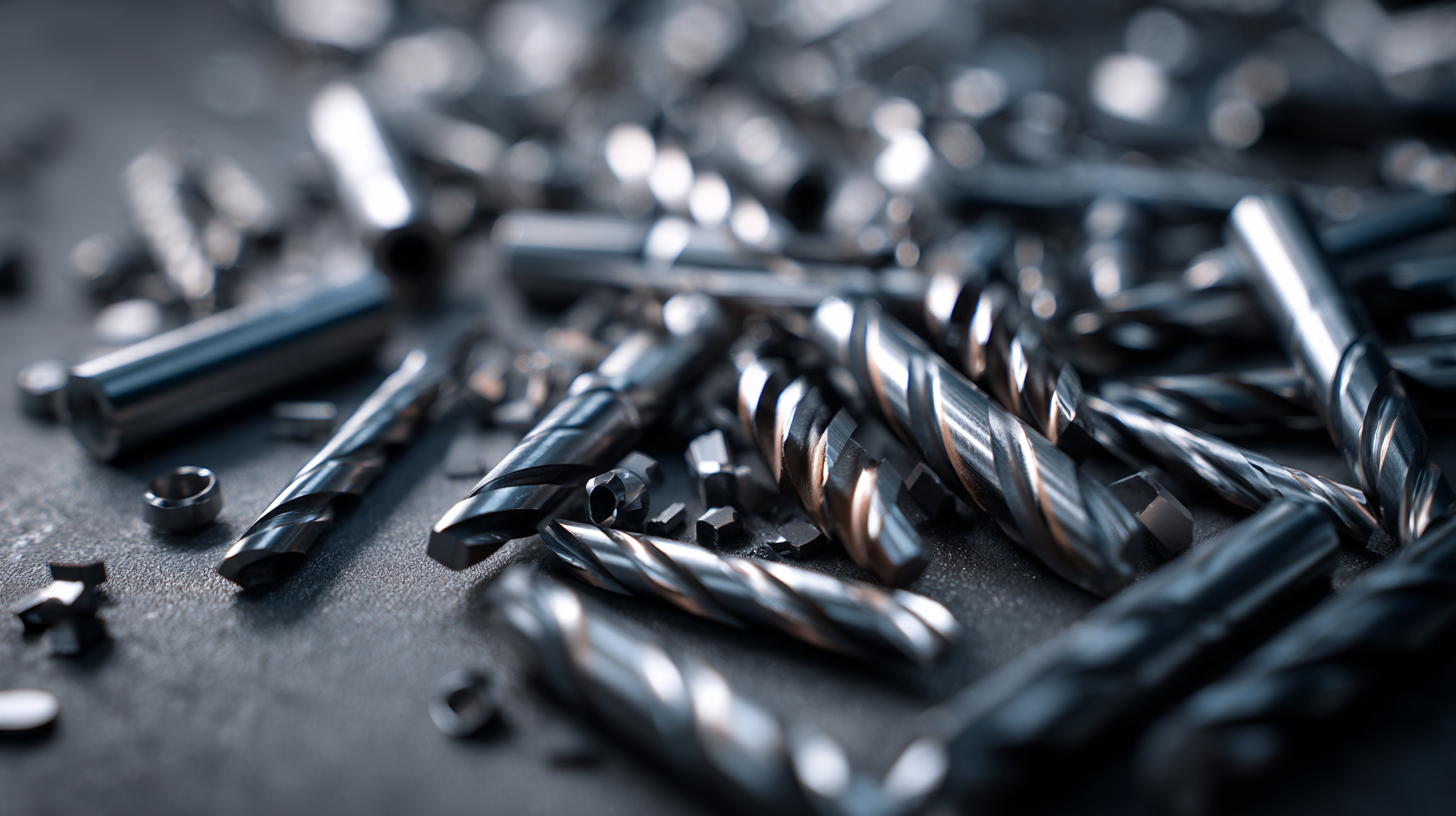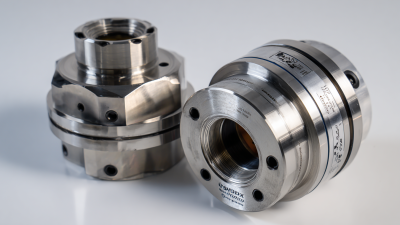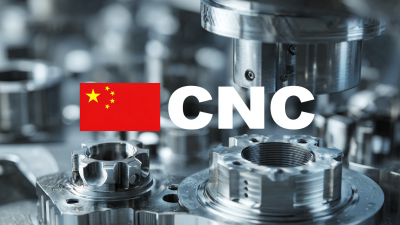
- sales@bjbod.com
- Mon - Sat at 7:00AM to 9:00PM

When it comes to aluminum machining, selecting the right CNC bits is crucial for achieving precision and efficiency in your projects. With the global CNC machining market projected to reach $100 billion by 2025, it’s more important than ever to understand how to choose the best tools for the job. Reports indicate that improper tooling can lead to a significant decrease in productivity, with up to 30% of machining time lost on tool changes and maintenance. Thus, understanding the unique requirements of aluminum, such as its thermal conductivity and ductility, is vital. The right CNC bits for aluminum can enhance material removal rates and extend tool life, which ultimately leads to better surface finishes and reduced operational costs. This guide aims to equip you with the knowledge necessary to make informed decisions when selecting CNC bits for aluminum, ensuring optimal performance in your machining endeavors.

When selecting CNC bits for aluminum applications, understanding their key features is crucial for achieving optimal results. Aluminum, being a softer metal compared to others like steel, requires specific bit designs to enhance performance. According to a report by Grand View Research, the global CNC machine market is projected to reach $100 billion by 2025, emphasizing the growing importance of machining precision and the need for specialized tools.
One of the most significant features to consider is the bit's geometry. A sharper cutting edge with a high rake angle allows for efficient chip removal and reduced cutting forces. Reports indicate that using bits with a polished finish can further decrease friction, improving cutting speed and prolonging tool life, which is essential given the substantial costs associated with tool wear. Moreover, the type of coating, such as TiAlN (Titanium Aluminum Nitride), can significantly enhance the bit's durability and heat resistance.
Another important aspect is the flute design. Bits with fewer flutes (two or three) typically provide better chip clearance, which is vital when machining aluminum. Research shows that the right balance of flute count and diameter can increase feed rates by up to 30%, resulting in quicker project turnaround times without compromising on precision. These considerations are vital for CNC operators looking to maximize efficiency and quality in their aluminum projects.
 When it comes to selecting the right CNC bits for aluminum projects, understanding the types of bits available and their specific functionalities is crucial. Three primary types stand out for aluminum cutting: end mills, ball nose end mills, and V-bits. End mills, particularly those made from carbide, are highly effective due to their sharp edges and ability to clear chips efficiently, making them ideal for cutting flat surfaces and contours in aluminum. The spiral design of these bits also helps reduce friction, preventing excessive heat buildup during the cutting process.
When it comes to selecting the right CNC bits for aluminum projects, understanding the types of bits available and their specific functionalities is crucial. Three primary types stand out for aluminum cutting: end mills, ball nose end mills, and V-bits. End mills, particularly those made from carbide, are highly effective due to their sharp edges and ability to clear chips efficiently, making them ideal for cutting flat surfaces and contours in aluminum. The spiral design of these bits also helps reduce friction, preventing excessive heat buildup during the cutting process.
Ball nose end mills, on the other hand, are perfect for creating rounded edges and intricate designs. Their unique shape allows for smooth cutting and a fine finish, which is essential for projects that require detailed work, such as decorative components. Lastly, V-bits are utilized for engraving and creating sharp, precise angles. Their design enables detailed and intricate carvings, making them an excellent choice for artistic aluminum projects. Each of these CNC bits plays a vital role in achieving different finishes and cuts, enabling a variety of applications tailored to your specific aluminum project needs.
When selecting CNC bits for aluminum projects, the coating of the bit can significantly impact both performance and longevity. Coatings such as TiN (Titanium Nitride) and TiAlN (Titanium Aluminum Nitride) are popular choices that enhance the bit’s durability and heat resistance. TiN-coated bits, known for their distinctive golden color, improve lubricity and reduce friction, leading to smoother cuts and longer tool life. On the other hand, TiAlN offers superior thermal conductivity, making it ideal for high-speed machining where heat generation is a concern.
Additionally, an uncoated or bare carbide bit might work for softer grades of aluminum; however, for more demanding applications, utilizing coated bits can lead to better surface finishes and fewer tool changes. The right coating not only affects the bit's cutting efficiency but also influences the overall quality of the finished product. Understanding the specific requirements of your project, such as the alloy of aluminum and the desired finish, will guide you in choosing the most suitable coating for your CNC bits, resulting in an optimal machining experience.
| Bit Type | Coating Type | Cutting Speed (RPM) | Material Type | Application |
|---|---|---|---|---|
| End Mill | TiAlN | 8000 | 6061 Aluminum | General Machining |
| Ball Nose | ZrN | 7000 | 2024 Aluminum | 3D Contouring |
| V-Bit | TiN | 6000 | 5052 Aluminum | Engraving |
| Spiral Upcut | Diamond Coated | 5000 | Aluminum Composite | Slotting/Cutting |
| Flat End Mill | AlTiN | 7500 | 7075 Aluminum | Face Milling |
When selecting CNC bits for aluminum projects, understanding the impact of bit size and shape on precision and finish is crucial. Larger bits generally remove more material quickly, making them suitable for roughing operations. However, they can compromise edge detail and precision, particularly in intricate designs. For detailed work, smaller bits are preferable as they allow for finer control and more intricate cuts, ensuring a cleaner finish and greater accuracy in detailed patterns or engravings.
The shape of the bit also plays a significant role; flat end mills provide a straight cutting edge, ideal for creating flat surfaces, while ball end mills are favored for sculpting curved surfaces. Tapered bits can be advantageous for achieving complex geometries or features that require angled cuts. Ultimately, by carefully selecting the size and shape of CNC bits, you can enhance not only the precision of your cuts but also the overall finish of your aluminum projects, making your work both efficient and visually appealing.
Proper maintenance of CNC bits is essential for achieving optimal performance when working with aluminum. Regular cleaning is a crucial step that should not be overlooked. After each project, it’s important to remove any aluminum chips or debris that may have accumulated on the bits. This prevents buildup that can hinder cutting efficiency and deteriorate the quality of your work over time. A soft brush and cleaning solution specifically designed for CNC tools can help ensure that your bits remain in top condition.

In addition to cleaning, regular sharpening of your CNC bits plays a significant role in extending their lifespan and enhancing their cutting capabilities. Dull bits can lead to poor finishes and increased wear, ultimately affecting accuracy and efficiency. Using a specialized sharpening tool or sending them to a professional service can revive their cutting edge. Finally, proper storage is vital; keeping CNC bits in a dry, organized environment helps prevent corrosion and accidental damage, allowing you to maintain high performance for all your aluminum projects.





